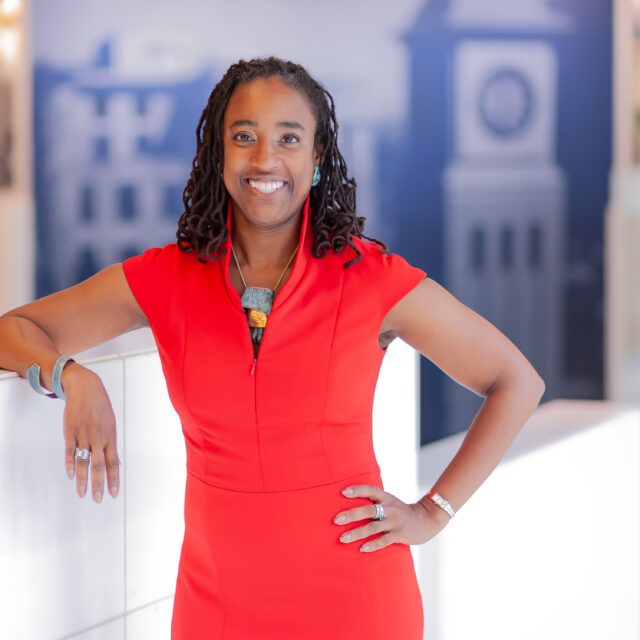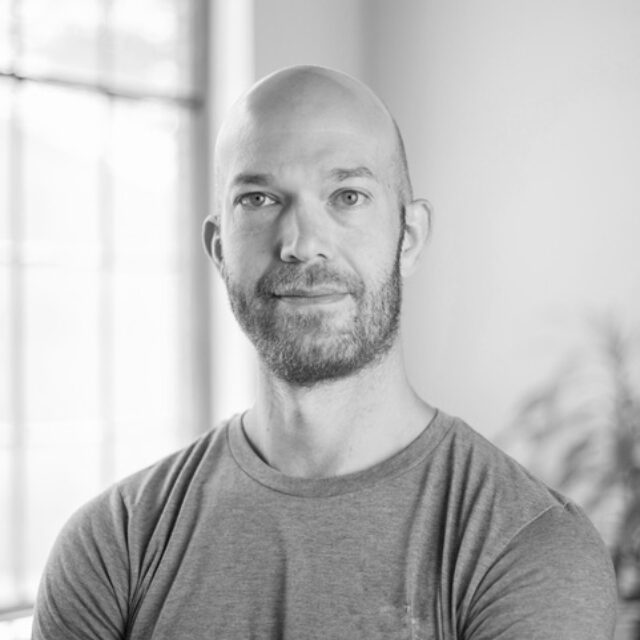Prof. Kristin Henning: Black Adolescence and the School to Prison Pipeline

4.29.2024
Safety in Numbers
Welcome to Everytown Research & Policy’s Safety in Numbers blog series, where we will invite leading experts in the growing field of injury and safety prevention to present their rigorous research in clear, user-friendly language on a regular basis. Our goal is to share the latest developments, answer important questions, and stimulate evidence-based conversations on gun violence prevention in which all of us can participate. If you have a topic you want to hear more about, please feel free to suggest it at: [email protected].
Sarah Burd-Sharps, Director of Research
Note: The views, opinions, and content expressed in this product do not necessarily reflect the views, opinions, or policies of Everytown.
Kristin Henning is the Blume Professor of Law and Director of the Juvenile Justice Clinic and Initiative at Georgetown Law. Her book, The Rage Of Innocence: How America Criminalizes Black Youth, was published in September 2021 and discusses race, adolescence, and policing.
Can you share more about your background in juvenile justice?
I grew up in a family of teachers and preachers who were committed to working with disadvantaged youth. So, in my freshman year of college, I decided to pursue an apprenticeship in a local juvenile court in Durham, North Carolina. I will never forget walking into the courthouse and seeing a line of children shackled together at their arms and their legs—it was an aha moment about what I wanted to do in my career.
That’s how I knew I wanted to be a defense attorney. I ended up going to law school, which allowed me to work in a clinic that advocated for kids. After graduating, I did a fellowship devoted to representing children in delinquency cases. I consider myself lucky to have found my career in juvenile justice early and to have stuck with it.
How did your experience in juvenile justice inform your perspective on the criminalization of Black and brown youth, specifically in schools?
The answer is twofold:
- We are using the criminal court and delinquency system to regulate normal adolescent behavior. But we do so disproportionately when it involves Black or brown children because there is a presumption that Black kids are somehow deviant in ways that white children are not, which is deeply rooted in the racially-biased history of our country.
- There is a false sense that routine interventions by Black families, Black communities, and Black churches will not be effective, so to manage Black children’s “deviance,” schools rely on the criminal legal system to intervene.
Can you talk about the criminalization of Black adolescence?
First, it’s important to understand that teenagers are in a developmental stage where impulsive, reactive, and emotional behavior is common. They are sensation seekers and risk-takers, and they value peer influence and a sense of fairness from authority. Teenagers do what their friends do or what they think their friends are doing. They sometimes make bad decisions and may not think ahead to the long-term consequences. This is how teenagers all over the world act, not just in the United States and not just Black and brown kids.
Next, think about what you cared most about as a teenager. It could be the clothes you wore, how you styled your hair or the music you listened to. Think about the boundaries you pushed. You might have talked back to adults, come home after curfew, or experimented with sex, drugs, and alcohol. And the vast majority of us came out just fine on the other side of that experimental phase.
But society characterizes this behavior among Black kids as criminal. For example, many genres of music—heavy metal, rock, country, pop—all have themes that glorify sex, partying or drug use, violence, and disobedience. But when Black youth listen to hip hop or rap music, they are characterized as dangerous while we allow white children to enjoy the privileges of adolescence—we don’t see their music as a serious threat. But Black children are suspended, expelled, arrested, and prosecuted for engaging in those same types of adolescent behaviors, both in schools and in public generally.
Adolescence is also about learning who you are, what you stand for, and how to deal with conflict. What happens to a kid’s brain when they’re allowed to engage in conflict and conflict resolution, and what happens when we infringe upon that?
I love that you started with the positive—how does the brain improve and enhance when it’s allowed to navigate interpersonal difficulty? The adolescent brain is malleable, and one of the critical aspects of adolescent development is cultivating interpersonal skills and meaningful relationships. Interpersonal engagement with peers, even if it is a disagreement, is critically important because it builds character and negotiation skills, and it teaches young people how to resolve conflicts. Even a school fight can have developmental benefits because it teaches young people how to stand up for themselves, and have pride in their own views and identity when they are attacked. These conflicts also allow peers to stand up for each other as well.
Of course, I don’t want to suggest that we should encourage physical fights, but it is important that we allow students to argue, to disagree, to vehemently express their views, and to take up for themselves. Any parent will tell you that you can’t rush in and immediately intervene whenever you see two kids struggling. If we don’t let them try to work it out themselves, we impede brain development because we stifle problem solving skills.
Even more so, when you put kids in detention facilities and impose strict rules that don’t allow for any interpersonal negotiation, you deprive children of an opportunity to grow and use the very important cognitive reasoning, analytical, and interpersonal skills, because you’ve got them in a carceral space.
What role do gender stereotypes play in disciplining (and criminalizing) behavior among Black youth?
There’s always some difference in how Black girls and Black boys are treated, how criminalization occurs across gender identity. In fact, many of the tropes and biases about Black girls increase the likelihood that they’ll be criminalized. Research shows that adults perceive Black girls as older, more mature, more knowledgeable about adult-like topics, less innocent, and less in need of protection than white girls, which helps explain why Black girls are significantly more likely to be suspended or expelled from schools than white girls. Some of the tropes that have been associated with Black girls pertain to the Jezebel myth—the presumption that a Black girl is more promiscuous. Black girls often get disciplined more harshly in school for dress code violations.
Adults also perceive Black boys as older than they are. For Black girls, this assumption of maturity often relates to sexuality; for Black boys, this perception leads to assumptions about aggression and criminality. Adolescents all over the world talk back, test limits, push boundaries, and challenge authority. But for Black boys, this behavior may be read as hostile or even dangerous and leads to more disciplinary actions in schools. In schools where police are often involved in mediating interpersonal conflict or addressing disciplinary issues, Black boys come into contact with law enforcement for behavior that would more likely be resolved in a vice principal’s office for a white student.
What are the impacts of these increased touchpoints with the criminal justice system?
There are generations of Black and brown children who have grown up in neighborhoods under the constant surveillance of police—at local recreation centers and parks, at the front door of their schools, and on the street corner store. These kids are more likely to be subjected to stop-and- frisk, property searches, and the use of physical force, not just once a day, but multiple times a day.
The presumption is that they must be up to no good. This has an extraordinary range of collateral consequences. There is now a growing body of research documenting the psychological trauma that Black and brown youth experience in contact with the police. Kids who live in these heavily surveilled neighborhoods and attend heavily surveilled schools report higher rates of fear, anxiety, depression, and hopelessness—they’re constantly on edge, on guard, worrying about contact with police. Their hypervigilance and distrust of police officers transfers over to other adult authority figures and erodes relationships that could be healthy allies for a young person.
How does a young person facing arrest or other law enforcement response change their life course?
It’s like putting a sledgehammer to a problem that only needs a twist of a screw. It’s that simple. Our overreliance on law enforcement responses teaches children that there’s something wrong with them and shapes their future behavior. It is frightening to be arrested, taken into custody, and appear before a judge. You are stripped away from your family, placed in an isolated cell, and removed from your daily milieu and routine. It’s traumatizing psychologically and it has real life consequences.
A kid can be kicked out of school because of a delinquency arrest, or they might be prohibited from getting their driver’s license, both of which are essential to gain employment. An arrest can undermine one’s ability to apply to a college or impact one’s admission. There are a lot of consequences to delinquency court involvement.
How does bias, not only about children, but about entire families or communities affect the experiences Black children have in school?
In a private or predominantly white middle-class school, if a child acts out, there may be a parent-teacher conference with the expectation that the parents and teachers will address the issues (e.g., drug use or aggressive behavior) as a mental health concern. Additionally, data shows that schools with a higher percentage of white students are more likely to have counselors, psychologists, and access to other mental health services on-site. By contrast, the first point of intervention in a predominantly black school is law enforcement instead of family and healthcare systems. Teachers may not always be consciously aware of their implicit racial biases, so even if they know how to de-escalate normal adolescent behaviors, racial bias might lead them to interpret those behaviors as more dangerous.
What do you think we should be doing to reduce the policing of normal behavior in schools for Black and brown kids?
We need to decriminalize adolescent behavior. When a child talks back or acts aggressively, adults need to understand the difference between typical adolescent aggressive speech and emotion and what rises to the level of a real threat. Other adolescent behaviors, like loitering, alcohol use, vandalism, and things of that nature should not be resolved in a court. We need changes in the law—statutory reforms that include police-free schools or anti-profiling laws.
We need a strong public health approach to school and community safety that is relational, racially just, restorative, and trauma-responsive. By relational, I mean an approach that seeks to cultivate meaningful relationships between adults and children. By racially just, I mean that Black and brown children know that they are being treated differently, and we have to eliminate racially biased responses. To be restorative, we need to repair relationships that have already been broken in schools and over-policed communities. And the trauma responsiveness speaks to the need for healing with social workers and mental health professionals who can work with young people across a continuum of mental health challenges. That in and of itself is going to reduce crime.
About Prof. Kristin Henning
Kristin Henning is the Blume Professor of Law and Director of the Juvenile Justice Clinic and Initiative at Georgetown Law. She was previously the Lead Attorney of the Juvenile Unit at the D.C. Public Defender Service and is the co-founder of a number of initiatives to combat racial inequities in the juvenile legal system, including the Ambassadors for Racial Justice program and a Racial Justice Toolkit for youth defenders. She has published many articles, essays, and anthologies on race, adolescence, and policing, including her recent book, The Rage of Innocence: How America Criminalizes Black Youth.





